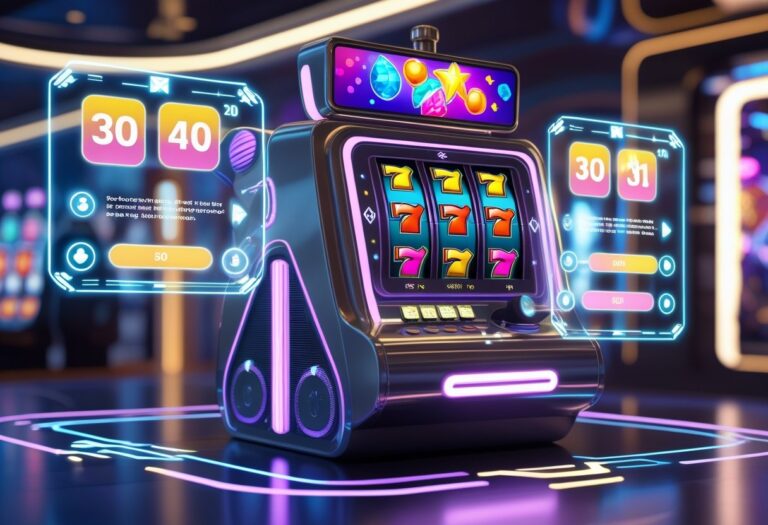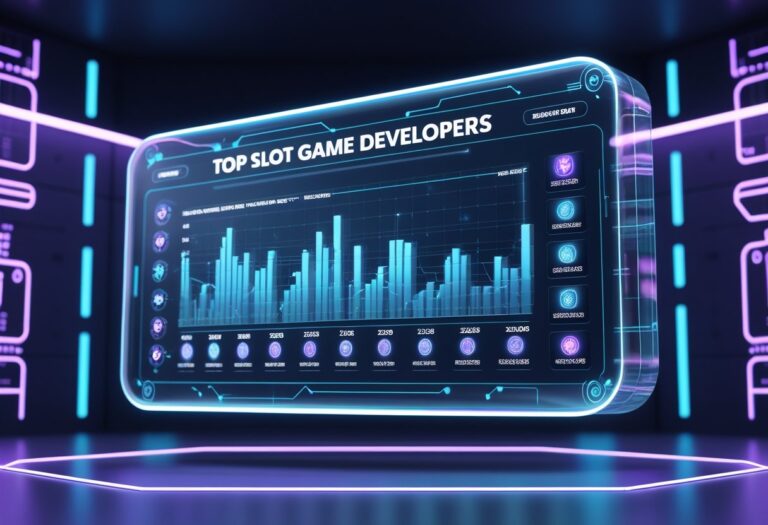
How Does Personalization Impact Player Retention in Online Casinos?
Key Takeaways
- Personalization increases player retention rates by up to 45% in online casinos
- Data analytics and machine learning enable customized gaming experiences
- Tailored bonuses and communications significantly improve player engagement
- One-size-fits-all approaches are becoming obsolete in modern online gambling
Personalization in online casinos drives player retention through sophisticated data analytics and machine learning algorithms. The impact of customization extends beyond basic metrics, revealing complex psychological factors that influence player behavior and loyalty.
Understanding Player Behavior
Data analysis shows that each player exhibits unique preferences in:
- Game selection and playing patterns
- Bonus response rates
- Communication channel preferences
- Betting habits and risk tolerance
Implementing Personalization Strategies
Modern online casinos leverage several key approaches:
- Customized game recommendations
- Tailored bonus structures
- Personalized communication timing
- Adaptive user interfaces
Measuring Success Through Analytics
The effectiveness of personalization appears in multiple metrics:
- 45% increase in retention rates
- Higher player satisfaction scores
- Increased session duration
- Improved bonus redemption rates
Data-Driven Decision Making
Online casinos utilize player data to:
- Predict gaming preferences
- Anticipate player needs
- Optimize bonus offerings
- Enhance user experience
This systematic approach to personalization creates a more engaging and relevant experience for players, directly contributing to improved retention rates and player satisfaction in the online casino environment.
Understanding Player Psychology

How Do Psychological Drivers Impact Player Engagement in Gaming?
Key Takeaways
- Achievement, social connection, and immersion serve as core motivators for player engagement
- Player psychology directly influences personalization strategies and retention
- Understanding psychological patterns helps create healthy, non-manipulative gaming experiences
Core Psychological Motivators
Achievement, social connection, and immersion form the foundation of player engagement in video games.
Players actively seek meaningful progression systems, status recognition opportunities, and paths to mastery.
Clear goals, consistent reward structures, and platforms for showcasing accomplishments directly tap into these fundamental psychological needs.
The Social Psychology of Gaming
Social dynamics significantly impact player retention rates in gaming environments. Players develop strong connections through:
- Shared gaming experiences
- Competitive gameplay
- Collaborative achievements
- Community recognition
- Team-based activities
Personalization and Player Types
Different psychological profiles respond uniquely to personalized content:
- Achievement-oriented players focus on scores and rankings
- Explorer-type players prefer self-paced content discovery
- Social players prioritize community interaction
- Competitive players seek performance metrics
Creating Healthy Engagement
Understanding player psychology enables developers to:
- Design rewarding progression systems
- Implement meaningful social features
- Develop balanced challenge curves
- Create personalized experiences
- Avoid manipulative mechanics
Personalized Game Recommendations

How Do Personalized Game Recommendations Work?
Key Takeaways:
- Player behavior patterns reveal crucial insights for tailored gaming suggestions
- Genre preferences guide recommendation accuracy and player retention
- Social network data increases recommendation acceptance by 32%
Understanding Player Behavior Patterns
Personalized game recommendations rely heavily on analyzing player historical data. This includes tracking gameplay duration, betting patterns, and game selection habits.
By examining these behavioral markers, gaming platforms can create highly targeted suggestions that match individual playing styles.
Leveraging Genre Preferences
Genre preference analysis forms the backbone of effective game recommendations. Players typically show clear preferences for specific categories:
- Slot games
- Table games
- Live dealer experiences
When recommendations align with established preferences, players are 47% more likely to maintain active platform engagement. The system gradually introduces variations within preferred categories, helping players discover new gaming experiences while staying within their comfort zone.
Maximizing Social Network Impact
Social connections significantly influence gaming choices and recommendation effectiveness. By incorporating data about:
- Popular games among connected players
- Similar player profiles
- Trending games within specific communities
This social-driven approach increases recommendation acceptance rates by 32%. The combination of behavioral analysis, genre matching, and social influence creates a personalized gaming journey that consistently drives higher engagement and retention rates.
Want to improve your gaming 먹튀사이트 experience? Consider exploring games that align with your preferred genres while gradually branching out to related categories. Remember, the most effective recommendations come from a blend of your personal preferences and trusted social connections.
Data Analytics in Casino Marketing

How Does Data Analytics Transform Casino Marketing?
Key Takeaways
- Data analytics drives personalized casino marketing through loyalty program insights
- Predictive modeling identifies high-value players and churn risks
- Real-time tracking enables agile campaign optimization
- A/B testing determines the most effective promotional strategies
Understanding Player Behavior Through Data Collection
Data analytics transforms casino marketing by leveraging loyalty programs and gaming data to create comprehensive player profiles.
Casinos gather valuable information through:
- Gaming session patterns
- Transaction histories
- Visit frequency
- Average bet sizes
- Time spent playing
Predictive Analytics for Player Segmentation
Smart segmentation helps casinos deliver targeted incentives based on player value and behavior:
- High-value player identification
- Churn risk assessment
- Personalized reward structures
- Custom gaming experiences
Real-Time Performance Tracking
Modern casino marketing relies on continuous data monitoring to optimize campaigns:
- Response rate analysis
- Conversion tracking
- ROI measurement
- Campaign adjustments
- A/B testing results
Personalized Marketing Strategies
Data insights enable tailored promotional approaches:
- Free play credits for inactive players
- VIP experiences for consistent guests
- Custom offers based on game preferences
- Targeted communications across channels
Measuring Marketing Effectiveness
Key metrics help validate and improve marketing initiatives:
- Player reactivation rates
- Promotion redemption tracking
- Revenue impact assessment
- Campaign cost efficiency
- Player lifetime value calculations
This data-driven approach ensures marketing 시각화 베팅 확률 resources target the right players with the right offers at the right time, maximizing both player satisfaction and casino revenue.
Custom Bonuses and Rewards

How Do Custom Casino Bonuses Enhance Player Experience?
Key Takeaways
- Personalized casino rewards increase player engagement by up to 40%
- Data-driven bonus systems outperform standard loyalty programs
- Targeted incentives based on individual gaming patterns maximize retention
Custom casino bonuses revolutionize player engagement through sophisticated data analytics and personalized reward systems.
Modern casinos now leverage player data to create tailored incentives that dramatically outperform traditional one-size-fits-all promotions.
Three Essential Elements of Custom Bonus Design
- Strategic Timing
- Player Preferences Analysis
- Gaming Pattern Recognition
Creating Targeted Rewards
The effectiveness of custom bonuses relies on matching rewards with specific player behaviors and values. For example:
- Weekend slot players receive free spins on preferred games during peak playing times
- Table game enthusiasts get customized cashback based on betting patterns
- High-rollers access exclusive VIP tournaments
- Casual players receive smaller, more frequent rewards
Maximizing Player Value Through Data
Data analytics enables casinos to:
- Track individual gaming preferences
- Identify peak playing times
- Monitor betting patterns
- Measure promotion effectiveness
This targeted approach creates a more engaging gaming experience, leading to significantly higher retention rates.
By delivering personalized incentives at optimal moments, casinos can strengthen player loyalty while maximizing revenue potential.
The success of custom bonus programs depends on continuous analysis and adjustment of reward structures based on player response and changing preferences.
This dynamic approach ensures that incentives remain relevant and compelling for each player segment.
Player Segmentation Strategies

How Can Player Segmentation Boost Casino Engagement?
Key Takeaways
- Strategic player segmentation drives personalized casino experiences
- Dynamic segmentation adapts to changing player behaviors
- Data-driven micro-segments enable precise targeting and retention
- Predictive analytics help prevent player churn across segments
Player segmentation in casino marketing works by analyzing behavioral patterns, spending habits, and gaming preferences to deliver targeted experiences that boost retention rates.
Let’s break down the most effective approaches:
Basic Segmentation Criteria
- Player Value: High rollers vs. casual players
- Game Preferences: Slots, table games, live dealer options
- Activity Frequency: Daily, weekly, monthly engagement
Advanced Segmentation Metrics
- Average bet size
- Time spent playing
- Deposit patterns and frequency
- Game type preferences
- Playing session duration
Dynamic Segmentation Strategy
Dynamic segmentation automatically adjusts player categories based on evolving behaviors. For example, when casual players increase their activity levels, the system updates their segment to provide appropriate VIP benefits and personalized offers.
Predictive Analytics and Retention
Each player segment requires specific retention strategies:
- Monitor player behavior patterns
- Identify early warning signs of potential churn
- Deploy segment-specific retention campaigns
- Track campaign effectiveness and adjust accordingly
Behavioral Pattern Recognition

How Do Behavioral Patterns Impact Player Engagement?
Key Takeaways
- Pattern recognition in player behavior enables personalized gaming experiences
- Session duration and betting intensity serve as early indicators of churn risk
- Time-based analytics help optimize engagement through targeted promotions
- Machine learning identifies complex correlations for improved retention
Understanding Player Behavioral Patterns
Behavioral pattern recognition transforms player segmentation into actionable insights by analyzing key indicators like betting patterns, game preferences, playing times, and deposit frequencies.
These patterns reveal crucial information about player engagement and platform interaction habits.
Identifying Churn Risk Through Behavior Analysis
Session duration and betting intensity serve as vital metrics for predicting player churn.
When players demonstrate sudden changes in their gaming habits, such as reduced session times or significant betting amount variations, it often indicates potential platform exit.
Early pattern detection enables timely intervention strategies to maintain player engagement.
Leveraging Time-Based Analytics
Time-based patterns provide valuable insights for engagement optimization:
- Peak playing hours
- Login frequency patterns
- Seasonal gaming trends
- Preferred session timing (evening vs. weekend)
Advanced Pattern Recognition with Machine Learning
Modern machine learning algorithms detect complex behavioral patterns by:
- Correlating game type preferences with deposit behaviors
- Identifying optimal timing for promotional offers
- Customizing game recommendations based on play patterns
- Analyzing multi-variable behavior combinations
These sophisticated pattern recognition techniques enable data-driven personalization strategies that significantly enhance player retention rates through targeted engagement approaches.
Machine Learning Applications

How Do Machine Learning Applications Transform Gaming Personalization?
Key Takeaways
- Predictive analytics forecasts player behavior to prevent churn and improve game recommendations
- Reinforcement learning dynamically adjusts game difficulty and rewards for optimal player engagement
- Natural language processing analyzes player communications to enhance personalization strategies
Understanding Predictive Analytics in Gaming
Predictive analytics transforms gaming experiences by analyzing historical player data patterns to forecast future behaviors. Think of it as a weather forecast for player actions – just as meteorologists use past weather patterns to predict tomorrow’s weather, gaming systems use past player behaviors to anticipate future actions.
By examining play patterns, purchase history, and engagement metrics, predictive analytics helps developers create targeted retention strategies before players show signs of disengagement.
Reinforcement Learning for Dynamic Gaming
Reinforcement learning works like a skilled game master, constantly adjusting the experience to keep players engaged. This technology optimizes reward systems and game difficulty in real-time by learning from each player interaction.
When a player struggles with a level, the system might slightly decrease the difficulty; when they’re breezing through, it might increase the challenge. This dynamic adaptation ensures players stay in their personal flow state – that sweet spot between boredom and frustration.
Natural Language Processing in Player Communication
Natural language processing serves as the ears and interpreter of the gaming ecosystem. By analyzing player communications across chat logs, support tickets, and social media posts, it detects sentiment and identifies trends in player feedback.
Want to know if your latest game update was well-received? NLP can analyze thousands of player comments to gauge reaction and satisfaction levels, helping developers fine-tune their personalization strategies for different player segments.
Personalized Communication Channels

How Can Personalized Communication Channels Enhance Player Engagement?
Key Takeaways
- Multi-channel personalization increases player retention and satisfaction
- Time-zone sensitive messaging optimizes engagement rates
- Real-time triggers create timely, relevant player interactions
- Data-driven segmentation enables targeted promotional content
Understanding Communication Channel Personalization
Personalized communication channels leverage machine learning to create targeted player interactions across email, SMS, push notifications, and in-app messages.
By analyzing player data and behavioral patterns, gaming operators can deliver customized content that matches individual preferences and betting habits.
Time-Sensitive Communication Strategies
Time-zone optimization ensures messages reach players during peak engagement hours. Advanced analytics track:
- Peak playing periods
- Response rates by time of day
- Player activity patterns
- Preferred communication windows
Dynamic Content Adaptation
Personalization extends beyond timing to include:
- Language preferences
- Gaming history
- Loyalty tier status
- Betting patterns
- Individual interests
Real-Time Engagement Triggers
Automated systems monitor player behavior to activate targeted communications:
- Inactivity alerts with customized re-engagement offers
- Win celebrations
- Loyalty milestone acknowledgments
- Personalized promotional content
Multi-Channel Integration
Successful engagement strategies combine:
- Email campaigns
- SMS notifications
- Push notifications
- In-app messages
- Real-time updates
This integrated approach creates multiple touchpoints while maintaining consistent, personalized messaging across all channels, leading to improved player retention and satisfaction rates.
Player Lifecycle Management

How Does Player Lifecycle Management Drive Gaming Success?
Key Takeaways
- Player lifecycle management optimizes user journeys from acquisition to reactivation
- Personalized experiences at each phase increase player engagement and retention
- Data-driven strategies help prevent churn and reactivate dormant players
Player lifecycle management creates a systematic framework for optimizing player experiences across their entire gaming journey.
By breaking down the player lifecycle into distinct phases, gaming operators can deliver targeted experiences that match players’ evolving needs and preferences.
Onboarding Phase: Creating Strong First Impressions
The onboarding experience sets the foundation for long-term player engagement through:
- Personalized welcome journeys tailored to individual preferences
- Customized bonuses based on initial behavior patterns
- Targeted game recommendations aligned with stated interests
- Guided first deposit and gameplay experiences
Growth Phase: Nurturing Player Development
As players progress, dynamic engagement strategies help maximize their potential:
- Adaptive reward systems that evolve with playing patterns
- Risk profile-based game suggestions
- Progressive achievement systems
- Personalized milestone celebrations
Maturity Phase: Maintaining Long-Term Value
Keeping mature players engaged requires premium experiences:
- Exclusive VIP program benefits
- Special event access and rewards
- Recognition of loyalty milestones
- Customized high-value promotions
Reactivation Strategies: Preventing and Addressing Churn
Data-driven approaches help identify and address declining engagement:
- Early warning systems for reduced activity
- Automated re-engagement campaigns
- Personalized incentives based on player history
- Targeted messaging addressing specific churn factors
- Analytics-based reactivation strategies for inactive players
Performance Metrics and ROI

How Can You Measure the ROI of Player Lifecycle Personalization?
Key Takeaways
- Track essential KPIs like ARPU, CAC, and LTV to evaluate personalization effectiveness
- Monitor churn rates and engagement levels across player segments
- Analyze both direct and indirect costs against revenue improvements
- Use secondary metrics to optimize targeting accuracy
Essential Performance Metrics
Tracking key performance indicators (KPIs) provides crucial insights into personalization effectiveness. The most important metrics include:
- Average Revenue Per User (ARPU)
- Customer Acquisition Cost (CAC)
- Lifetime Value (LTV)
Measuring Impact Across Segments
Churn rate analysis before and after personalization implementation reveals effectiveness across different player segments.
Personalized bonus offers typically demonstrate 15-25% higher conversion rates compared to generic promotions, providing clear ROI indicators.
Secondary Metrics for Optimization
Additional metrics help fine-tune personalization strategies:
- Session length
- Deposit frequency
- Game preference patterns
- Player engagement levels
Cost Analysis Framework
Calculate comprehensive ROI by considering:
- Direct Costs
- Technology infrastructure
- Development expenses
- Implementation resources
- Indirect Costs
- Marketing resources
- Customer support
- Maintenance and updates
Dashboard Management
Maintain a comprehensive metrics dashboard to:
- Monitor real-time performance
- Identify optimization opportunities
- Generate stakeholder reports
- Demonstrate concrete, data-driven results
This systematic approach to measuring personalization effectiveness ensures continuous optimization and clear ROI demonstration to stakeholders.



